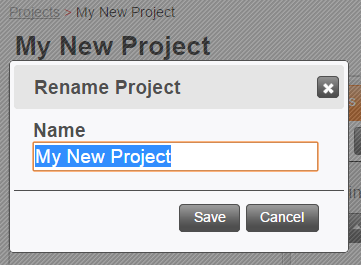Reusable Content
Titania Delivery
A Project is a container where the content owner places the content they want to distribute. You can think of a Project as a virtual file system containing your files, organized into folders.
A Portal is a content delivery channel. Think of a Portal like its own website targeted at an individual audience. A Portal can pull its content from one or more Projects and filter that content using metadata rules.
A Portal Theme allows you to control every aspect of the appearance of a Portal, from the HTML and CSS of the web pages themselves to the stylesheets used to convert XML content into viewable HTML.
An Organization is a container for content delivery assets. An Organization has ownership of its own Projects and Portals, and can also be added to Projects owned by other users or Organizations.
A Document Type is a special kind of Project that contains the XML grammar definition files – DTDs and XML Schemas – that are used to parse XML content.
The Owner dropdown will display the organization selected when clicking New.... The dropdown will allow the selection of some other owner, in case the wrong link was used to launch the dialog.
Click the New... button in the header of one of the sections in your BLANK list.
Click the time range at the top of the screen to select an alternative time window from which to generate the report charts. You can also exclude traffic from known bots and search engine crawlers by selecting the Exclude known bots and crawlers checkbox. Finally, use the Exclude media references checkbox to configure whether references to non-content objects, like graphics, should be excluded from the reports.
- Most Viewed DITA Map Contexts
- The top 10 DITA maps whose topics and/or tables of contents have received the most views over the specified time range across all portals.
- Top Browsers
- The top browser family names, as determined from the browser's
User-Agentrequest header value.Note: Modern Microsoft Edge™ browsers (released in late 2019) were recorded as "Chrome" browsers in Titania versions prior to 4.3. - Top Countries
- The 10 most-common countries from which traffic is generated, where the client's geographical region can be determined.
- Top Regions
- The 10 most-common regions (e.g. states or provinces) from which traffic is generated, where the client's geographical region can be determined.
- Top Cities
- The 10 most-common cities from which traffic is generated, where the client's geographical region can be determined.
- Content View Records
- Every view of a piece of content through a portal will be
recorded in this report, including a timestamp, identifying
information for the user, as well as details of their
browser, operating system, and device.
Note: The modern Microsoft Edge™ browser name is recorded as "Chrome" prior to Titania version 4.3. Starting with version 4.3, the name of these browsers is recorded as "Edge", and the "User Agent" string will have been modified from its original form to change the spelling of "Edg" to "Edge". You should take this change into account when performing further analysis on the "User Agent" values. If it is necessary to distinguish between Edge™ versions, use the version identifier.
- Search Records
- Every search attempted via the portal will be recorded, including search term, the number of results, and whether the user needed to navigate past the first page of results.
- User Comments
- This report contains element and document-level comments in the portal, including identifying information for the document and, when applicable, the element where the comment was left.
- Helpfulness Votes
- This report includes the responses, including comments, left through the Was This Helpful widget that appears on many portal web pages.
- User Data Entries
- This will cause the zip to include a
userdatafolder, containing the data stored using the Portal Theme SDK'sUserDataandSiteDatafeatures. Each user withUserDataentries will have its own XML document containing that user's data. In addition, there will be asite.xmlfile containing anySiteData.
